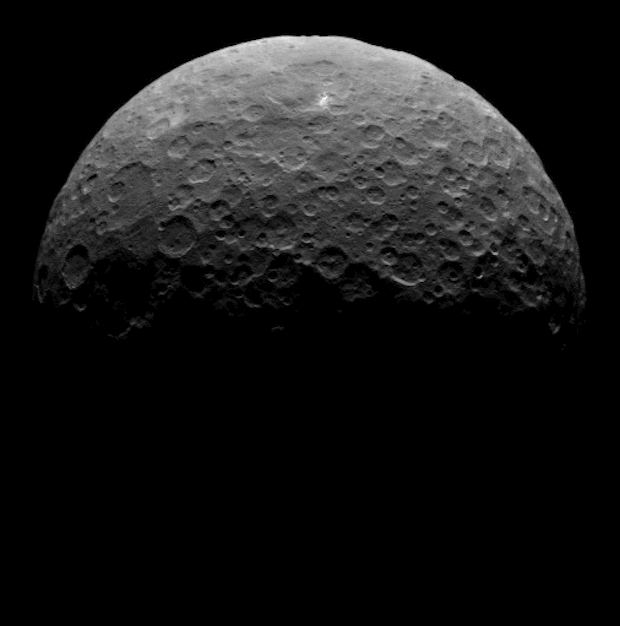Dwarf planet Ceres reveals its mystery spots
Scientists are getting another chance to view the brightest spots on the dwarf planet Ceres, an opportunity that could help them finally determine their composition and source.
The mystery spots first were seen last month by NASA's Dawn spacecraft, prompting scientists to suggest they were reflections off exposed ice or some other material. Now, new images taken by Dawn on April 14 and 15 from a vantage point 14,000 miles (22,000 kilometers) above Ceres' northern hemisphere have caught the curious lights once again.
The images also showcase heavy cratering on the dwarf planet. And as Dawn gets closer to Ceres, more surface features are expected to emerge.
"The approach imaging campaign has completed successfully by giving us a preliminary, tantalizing view of the world Dawn is about to start exploring in detail. It has allowed us to start asking some new and intriguing questions," said Marc Rayman, Dawn's mission director and chief engineer, based at NASA's Jet Propulsion Laboratory, Pasadena, California.
Beginning on Thursday, Dawn will spend about three weeks in a near-circular orbit around Ceres, taking observations from 8,400 miles (13,500 kilometers) above the surface. On May 9, Dawn will begin to make its way to lower orbits to improve the view and provide higher-resolution observations.
Dawn is the first spacecraft to orbit more than one body, the first to visit a dwarf planet -- Ceres -- and the first operational science probe to rely on ion propulsion, using solar-generated electricity to accelerate xenon ions to enormous velocities, producing a gentle but almost continuous thrust.
Scientists will be comparing data from Ceres to the giant asteroid Vesta, which Dawn studied from 2011 to 2012. This should offer them insights about the formation of our solar system, since Ceres and Vesta -- located in the main asteroid belt between Mars and Jupiter -- were on their way to becoming planets before their development was interrupted.
